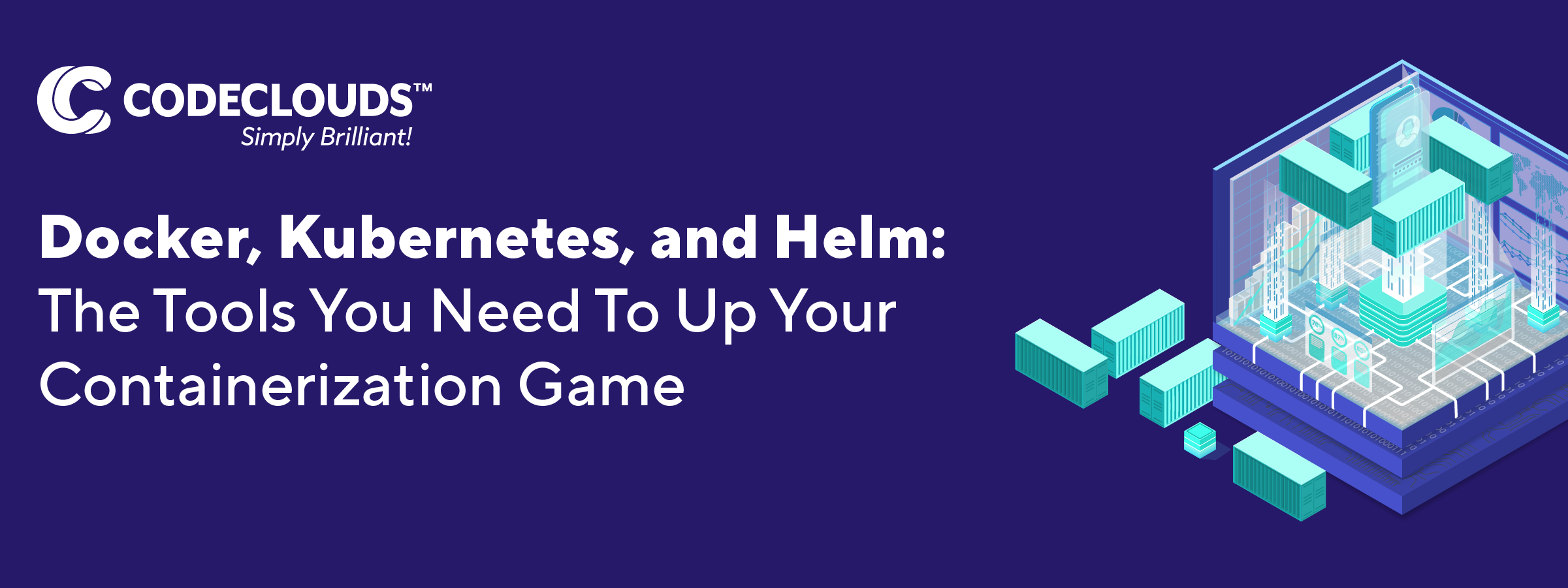Overview
Containers are one of those technologies that have been around for a long time, but recent changes in the tech landscape have taken them from a curiosity to a critical pillar of our infrastructure in a few short years. Like JavaScript needed AJAX, containers really needed Docker—it took them from an obscure trick done by Level 9000 Linux Wizards to something you can set up in a few simple clicks. Now everybody is using containers, but the three musketeers of Docker, Kubernetes, and Helm remain right at the center of things.

Docker
The core technology that the rest of this all runs on. Docker lets you spin up and deploy a container in just a few clicks, using a lightweight image.
If you haven’t run into containers before, think of them like a Virtual Machine, but extremely lightweight. While a VM simulates the entire machine, multiple containers can exist on the same OS kernel; think of a VM as a townhouse and containers as apartments. They are perfect for developers, as they mean you can run more applications, using less space and less hardware, and you can run your applications the same on the cloud as you can on a computer. Not to mention, it’s super simple to couple and decouple applications with containers. In other words, they’re perfect for agile development.
Containers have been around for a long time, but Docker took them from obscure to everyday by making the process easy. Previously it took a very skilled programmer hours, and it was hard to guarantee stability. Now, you can have a working server set up in less than five minutes. While there are other containerization options on the market, Docker remains the best.
I use Docker as a production environment often enough, but its big strength is as a sandbox. Do you want to test your software in four different operating systems and six browsers? Just find the images you want and spin up the containers. Docker has millions and millions of images available, for basically anything you can think of. Just type docker pull ubuntu and congratulations, you’ve got Ubuntu 22.04 ready to go. docker pull node, docker pull python, docker pull mongo: they’re all at your fingertips in mere seconds. This really speeds up the testing process.
Kubernetes
So you’ve got Docker and you’ve launched a single container. That’s great, but what if you need more? What if you need a lot more? After a long time existing only inside the Google offices, Kubernetes got a full open-source release in 2015 and quickly became one of the most popular projects on GitHub.
Kubernetes is a tool that comes bundled with Docker that helps you to organize your containers into a “cluster”. It can be used both locally and in the cloud. Kubernetes can make sure no container uses up too much storage, RAM, or CPU resources; self-heal malfunctioning containers; automate rollouts and rollbacks; and keep your containers secure. In the cloud, these parameters are often configured, as needed, during deployment.
If you’re not looking to have to bash your way in, Google Cloud, Azure, AWS, and DigitalOcean all come with Kubernetes support, and you can easily configure it through their dashboards. But if you’re looking to get under the hood (or use Kubernetes locally), the Kubernetes Foundation has handy quickstart guides on their site.
Helm
Which leads us to the most recent addition to the team: Helm. Helm is a package manager that perches on top of Kubernetes and lets you create YAML configuration files (‘charts’) that group together application components. Without it, you need a whole bunch of different YAML files (Deployments, Services, ConfigMaps, and Volumes), but a Helm chart rolls them all into one. Especially if you’re running a whole slew of different microservices, this can massively cut down on config files.
Have you run APT before? Helm’s essentially that, but tailored for Kubernetes’ unique architecture. Therefore, Helm can help you download and update Kubernetes’ applications and share them in a format that is easily accessible to others.
This is made even easier by an open-source project called Artifact Hub which allows you to search for, download, and upload Helm charts.
.png)
Docker, Kubernetes, and Helm are the tools you need to bring your container game up to date. There’s a lot you can do with containers, but you need the right apps to make the most of them. Using these three programs together will help you create, organize, and share containers, as well as giving you access to the strong open-source communities these technologies run on.
Need help with application development and deploying containers? Hire CodeClouds’ expert web app developers, who are well versed in containerization, and, of course, Docker, Kubernetes, and Helm.
Share this article
578 reads
Similar Reads




